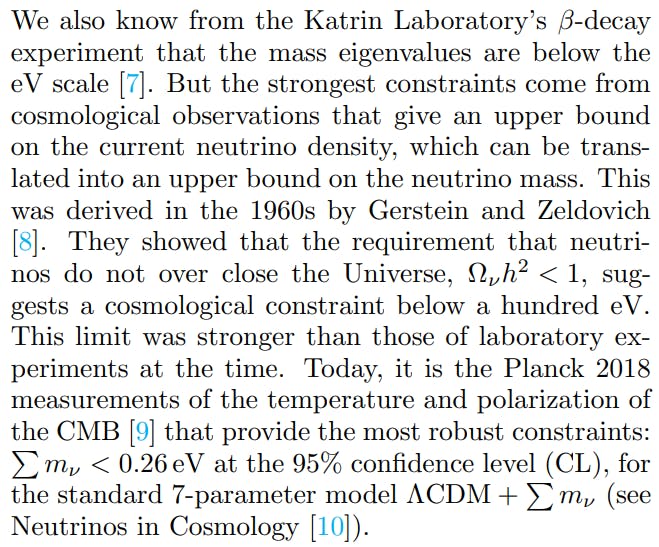
2024-5-24 22:0:24 Author: hackernoon.com(查看原文) 阅读量:0 收藏
This paper is available on arxiv under CC 4.0 license.
Authors:
(1) Vitor da Fonseca, Instituto de Astrof´ısica e Ciˆencias do Espa¸co, Faculdade de Ciˆencias da Universidade de Lisboa;
(2) Tiago Barreiro, Instituto de Astrof´ısica e Ciˆencias do Espa¸co, Faculdade de Ciˆencias da Universidade de Lisboa and 2ECEO, Universidade Lus´ofona;
(3) Nelson J. Nunes, Instituto de Astrof´ısica e Ciˆencias do Espa¸co, Faculdade de Ciˆencias da Universidade de Lisboa.
Table of Links
- Abstract and Intro
- Coupling Dark Energy to Neutrinos
- Impact of the Coupling on Perturbations and Observables
- Parameter Estimation
- Discussion
- Acknowledgment, Appendix, and References
Abstract

I. INTRODUCTION
The standard hot Big Bang model predicts that the Universe is filled with a background of thermal relic neutrinos, called the cosmic neutrino background (CνB), with a temperature and density of the order of the cosmic microwave background (CMB) photons [1, 2]. Neutrinos are held in thermal equilibrium with the primordial plasma by electroweak interactions until the temperature of the Universe drops to T ≃ 1 MeV. Below this temperature, they decouple from the thermal bath and flow freely along geodesics of spacetime. Since the neutrinos are still ultrarelativistic when they decouple, they retain a relativistic Fermi-Dirac distribution even though they are no longer in thermal equilibrium. Not being subjected to the Boltzmann exponential suppression, we have far more neutrinos than would otherwise be expected. Although relic neutrinos are very abundant, there is still no direct evidence for their background because it is hard to detect at low energy level, given that they have a very small cross section with matter. There is only indirect evidence for the CνB, mainly through gravitational interactions, for which theoretical predictions are in excellent agreement with observations of the CMB and large-scale structure.


In this work, we investigate whether it is possible to relax the existing cosmological upper limit on the neutrino mass through a possible interaction between the neutrino fluid and the dark energy component [11, 12] given by a scalar field. We consider a mass-varying neutrino (MaVaN) scenario, where the coupling leads to an effective neutrino mass that depends on the value of the field [13–21]. We employ a minimal parametrization where the scalar field depends linearly on the number of e-folds [22]. It limits the number of additional parameters with respect to the concordance model and alleviates the initial conditions problem [23] thanks to the scaling behavior of the field at early times. Such parametrization has been used in the context of testing a coupling between quintessence and the electromagnetic sector, and scalar field – dark matter interactions [24–26], but never utilized in the context of neutrino interactions. By testing the model with a particular data set that combines observations of the CMB, structure growth, and background expansion, we show that the constraint on today’s mass is weakened by neutrinos of growing mass [27, 28] that receive energy from the quintessence component over cosmic time.
A mechanism that couples the scalar field, as early dark energy, to the neutrinos has been proposed [29, 30] to alleviate the Hubble tension, i.e. the discrepancy between the H0 determinations of high and low redshift probes [9, 31–33], but it remains to be tested with cosmological observations. Nevertheless, the Hubble tension is not the subject of this paper, since the early dark energy component in our model is insufficient to affect it.

如有侵权请联系:admin#unsafe.sh